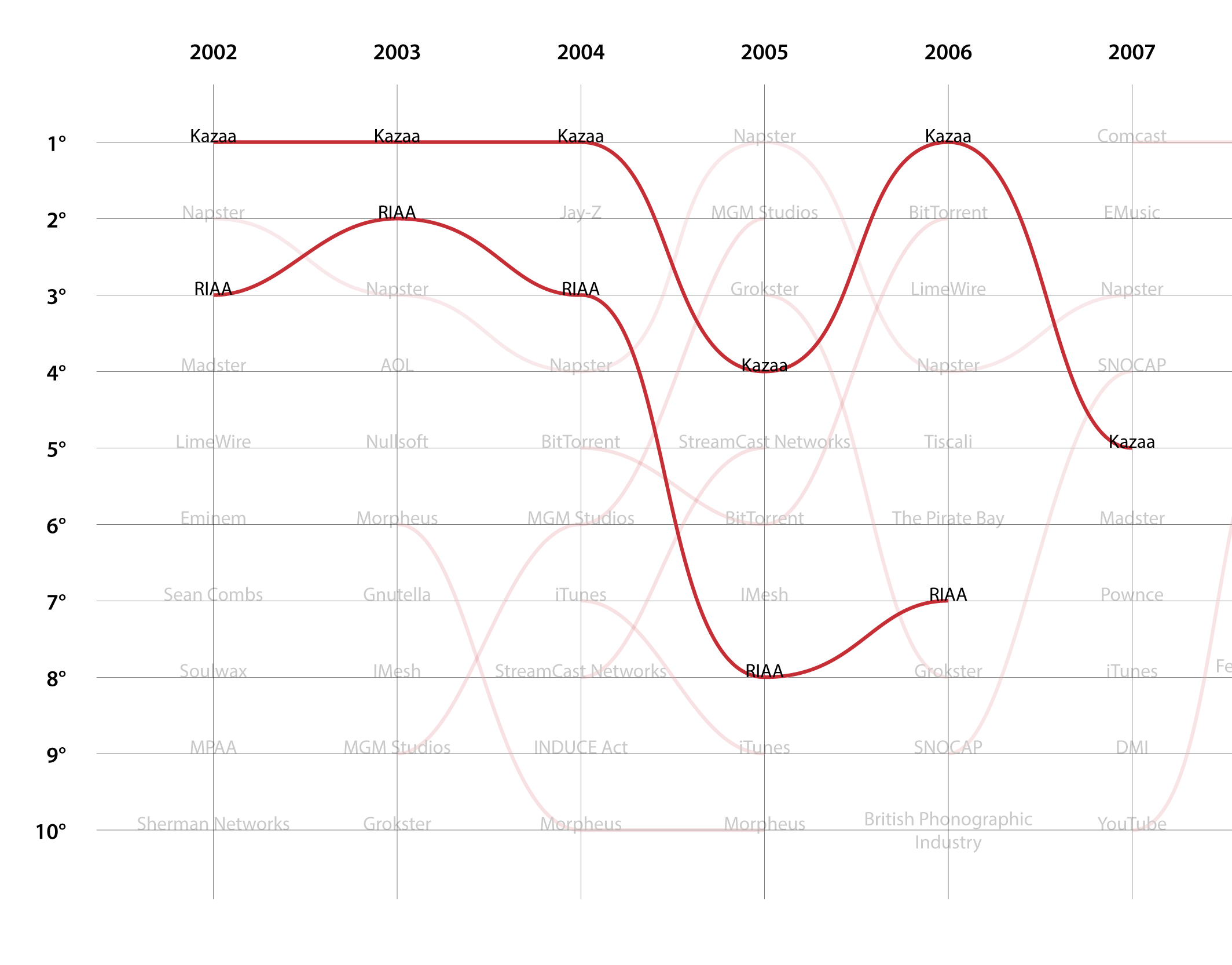Findings
The visualization show a result that is interesting to analyse. First of all, the first position is always occupied by an illegal platform related to the copyright infringement. This happens because the opinions are led by the events, which define, open and close periodically the discussion. So it's easy to understand why, for instance, is it possible to find "The Pirate Bay" in first position only in 2009 (year of the first process), even if the platform is active since 2003.
Furthermore, is it possibile to identify the major and the artists right below the illegal file-sharing platform, displaying the tight relation between the defenders and violators of the copyright (i.e. RIAA-Kazaa).




